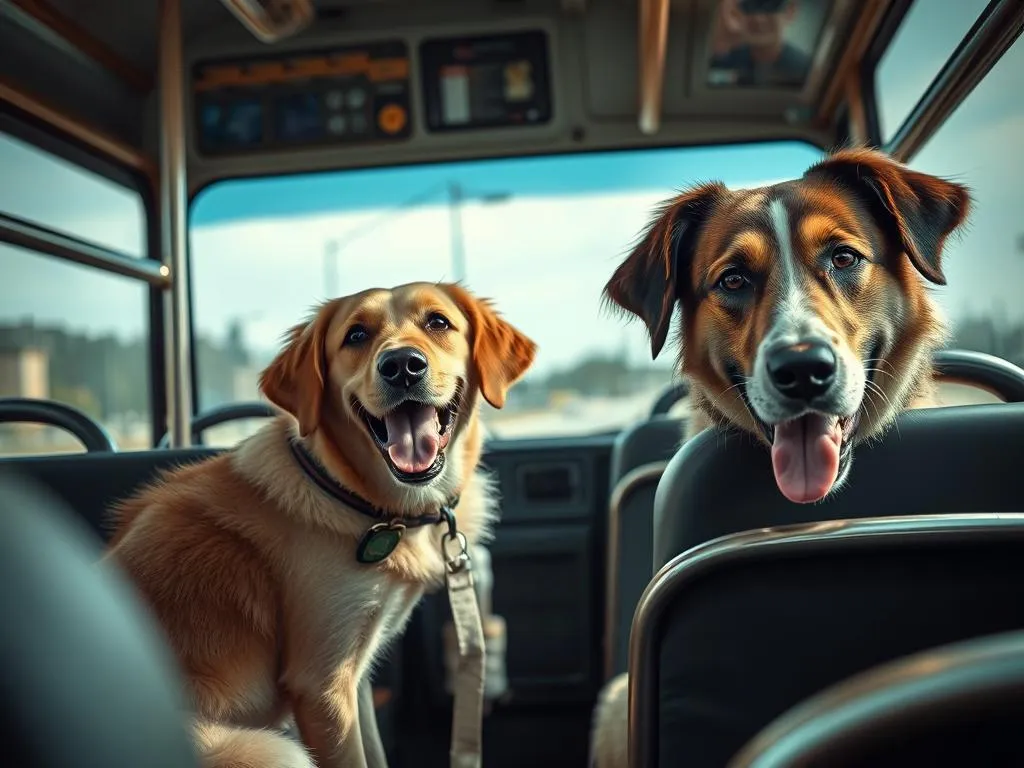
Introduction
As pet ownership rises, so does the need for convenient and accessible public transportation options that accommodate our furry companions. The question on many pet owners’ minds is, can dogs ride the bus? With cities increasingly adopting pet-friendly policies, the landscape of public transport is evolving to become more inclusive for dogs. This article aims to explore the ins and outs of bringing dogs on buses, providing a comprehensive guide for pet owners looking to navigate this aspect of travel.
Understanding Public Transportation Policies
General Rules for Pets on Public Transport
When it comes to public transportation, each city has its own set of regulations regarding pets. Generally, buses tend to be more lenient than trains or subways, but policies can vary significantly. Many transit systems allow small dogs if they are in a carrier, while larger dogs may be permitted on a leash. Some cities, like San Francisco and New York, have embraced pet-friendly policies, allowing dogs aboard their buses and trains under specific guidelines.
In contrast, other cities may have stricter rules, restricting pets entirely or only allowing service animals. To ensure a smooth journey, it’s essential to familiarize yourself with your local bus system’s policies.
Factors Influencing Pet Policies
Several factors influence whether dogs can ride the bus, including:
- Size and breed considerations: Smaller dogs often have more opportunities to travel on public transport compared to larger breeds.
- Health and safety regulations: Transit authorities prioritize safety and may impose rules to protect passengers from potential allergies or fears related to certain dog breeds.
- Local laws and ordinances: Some regions may have specific laws governing pets on public transportation, which can affect the overall policy.
Understanding these factors can help you prepare better for your journey and avoid potential conflicts.
Researching Your Local Bus System
Finding the Right Information
Before embarking on your adventure, it’s crucial to know your bus system’s pet policies. Begin by visiting the official website of your local transit authority. Look for sections dedicated to passenger guidelines or pet policies. If the information is unclear, don’t hesitate to contact customer service for clarification.
Utilizing social media or community forums can also provide insights from fellow pet owners who have traveled with their dogs on public transport.
Popular Cities with Pet-Friendly Bus Policies
Several cities have taken the initiative to make public transportation more accessible for pet owners. Here are a few notable examples:
- San Francisco: The city’s Muni buses allow dogs on a leash, provided they do not occupy a seat.
- New York City: The Metropolitan Transportation Authority (MTA) permits dogs on subways and buses as long as they are in a carrier or on a leash.
- Seattle: King County Metro allows dogs on board, encouraging a pet-friendly atmosphere.
These case studies showcase how cities can thrive when they embrace pet-friendly initiatives in public transport, making life easier for pet owners.
Preparing for Your Bus Trip with a Dog
Health and Safety Preparation
Before hitting the road, ensure your dog is healthy and fit for travel. Schedule a vet appointment to get a health check-up, confirming that vaccinations are up to date. In some places, health certificates may be required for travel, especially if you’re taking a longer journey.
Consider your dog’s temperament and behavior. If your dog tends to get anxious in unfamiliar situations, it may be beneficial to practice short trips in your local area to get them accustomed to the bus environment.
Essential Supplies to Bring
Packing the right supplies is essential for a successful bus trip with your dog. Here’s a list of recommended items to bring:
- Leash: A sturdy leash is crucial for keeping your dog under control.
- Muzzle: If your dog is not accustomed to crowded spaces or has a history of aggression, consider using a muzzle for safety.
- Portable water bowl: Staying hydrated is essential, especially during longer trips.
- Comfort items: Bring along a familiar toy or blanket to help soothe your dog during the journey.
Efficient packing can make your travel experience smoother, so consider using a dedicated pet travel bag to keep everything organized.
Best Practices for Riding the Bus with Your Dog
Behavior Training for Dogs
Before you embark on your journey, it’s vital to invest time in behavior training for your dog. Socialization is key; exposing your dog to various environments, people, and other animals can reduce anxiety during travel.
There are several commands every dog should know before the trip, including:
- Sit: A basic command that can help keep your dog calm in crowded spaces.
- Stay: This command can prevent your dog from wandering off or causing disruptions.
- Leave it: Essential for keeping your dog from picking up unwanted items or interacting with other passengers.
Training can significantly enhance your dog’s comfort and behavior during transit.
Keeping Your Dog Calm During the Journey
Managing your dog’s anxiety during the bus ride is crucial for a pleasant experience. Here are some techniques to help keep your dog calm:
- Calming treats: Consider giving your dog calming treats before you leave home, which can help ease their nerves.
- Familiar toys: Bringing along a favorite toy can provide comfort and familiarity in an unfamiliar environment.
- Routine: Maintaining a routine before and after your journey can help your dog feel secure.
By considering these techniques, you can create a more enjoyable travel experience for both you and your furry friend.
Etiquette for Dog Owners
Respecting Other Passengers
As a dog owner, it’s essential to be considerate of other passengers. Here are some guidelines to follow:
- Keep your dog under control: Always ensure your dog is on a leash and close to you, especially in crowded areas.
- Be mindful of space: Avoid allowing your dog to occupy extra space, such as sitting in a seat or blocking the aisle.
- Address conflicts politely: If someone expresses discomfort due to allergies or fears, remain calm and respectful. You may need to relocate to ensure everyone feels safe.
Respecting the comfort of others is an important part of being a responsible pet owner.
Cleaning Up After Your Dog
Being responsible for your dog’s behavior is paramount, especially when it comes to cleanliness. Here are some tips for managing waste while traveling:
- Carry waste bags: Always have waste bags on hand to clean up after your dog immediately.
- Be prepared: If your dog has a history of accidents, consider carrying a small towel or cleaning supplies to manage any messes.
Taking these precautions ensures that you remain a considerate passenger while also promoting a positive image of dog owners in public spaces.
What to Do If Your Dog Doesn’t Adjust
Recognizing Signs of Distress
While many dogs adapt well to new environments, some may show signs of distress during travel. Common behavioral indicators include:
- Excessive barking or whining
- Panting or drooling
- Attempting to escape or hide
If you notice any of these signs, it’s crucial to address your dog’s discomfort promptly. This could involve taking a break outside the bus or using calming techniques to soothe them.
Alternatives to Public Transport
If your dog struggles to adjust to bus travel, consider alternative transportation options:
- Rideshare services: Some rideshare apps allow dogs, making it a convenient option for pet owners.
- Personal vehicles: If feasible, driving your car may provide your dog with the comfort of familiar surroundings.
- Dog-friendly taxis: In some cities, taxi services cater specifically to pet owners, offering a more tailored travel experience.
Each alternative comes with its own pros and cons, so evaluate your options based on your dog’s needs and your travel requirements.
Conclusion
In conclusion, the question can dogs ride the bus is increasingly met with a resounding yes in many urban areas across the globe. By understanding public transportation policies, preparing adequately, and adhering to etiquette guidelines, pet owners can enjoy the benefits of including their dogs in everyday travel. Public transportation can open up new opportunities for adventures with your furry companions, enhancing both your life and theirs.
Traveling with dogs can be a rewarding experience that strengthens the bond between you and your pet. Embrace the journey and explore the pet-friendly options available in your area.









